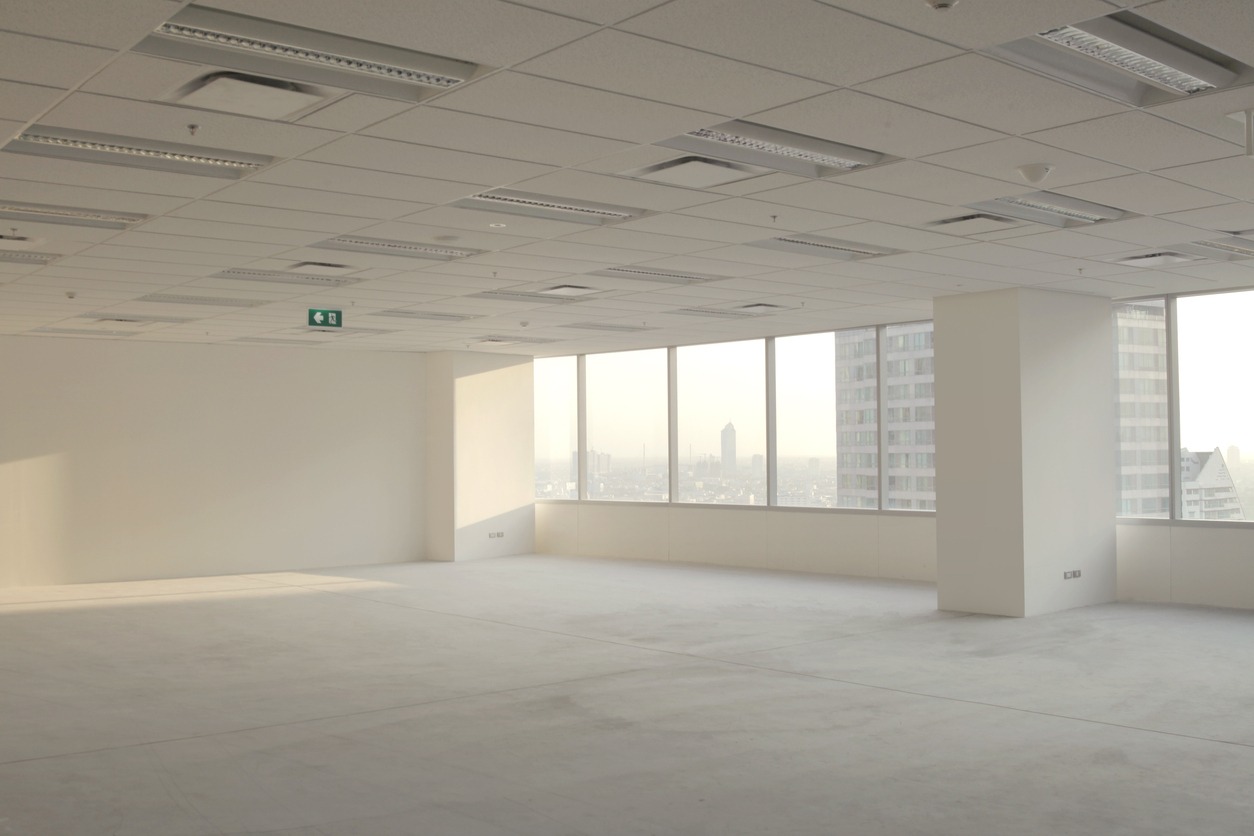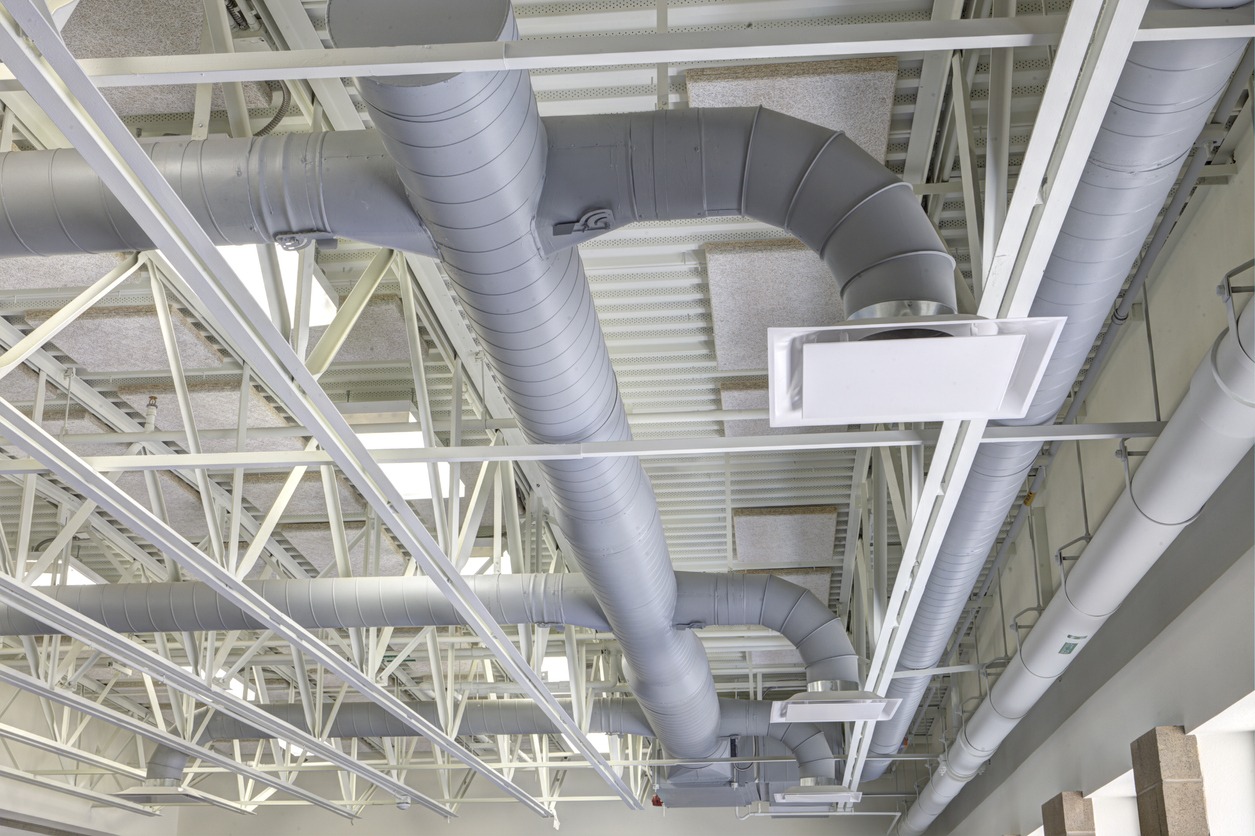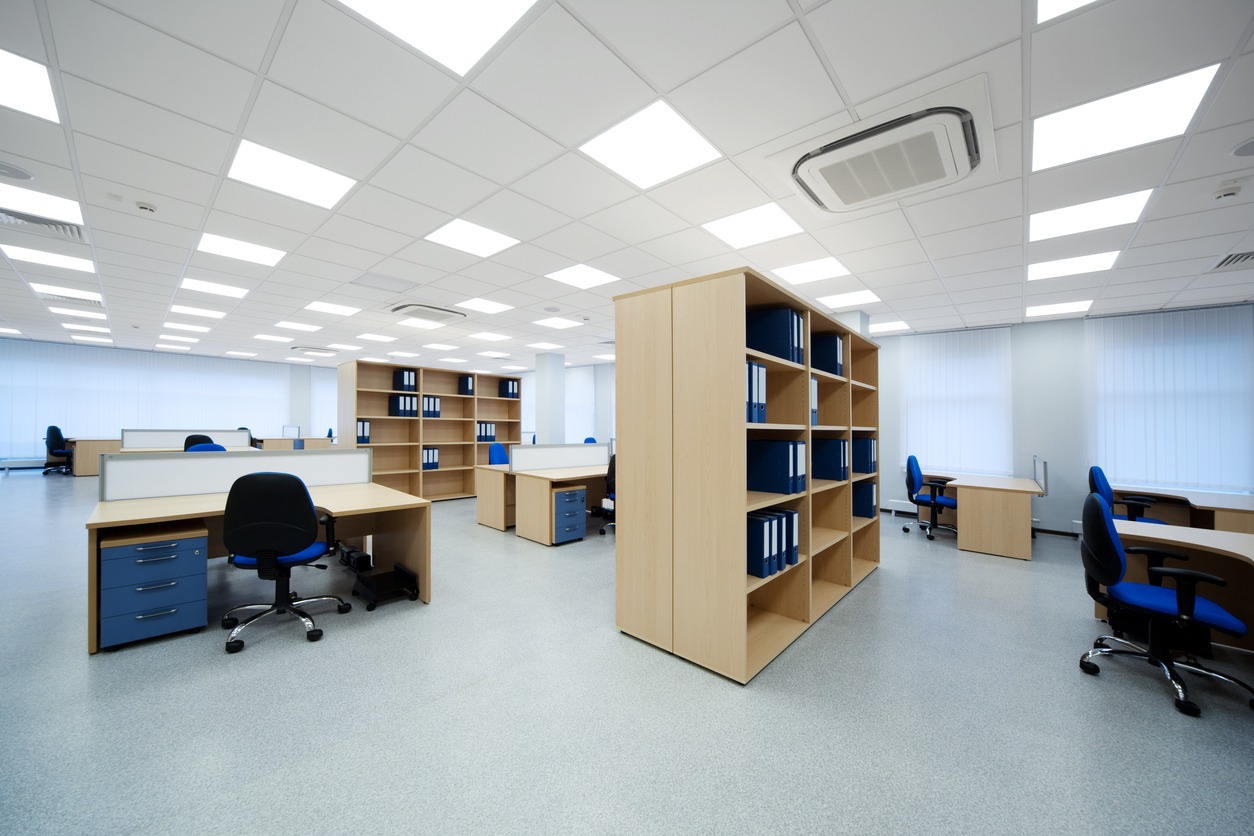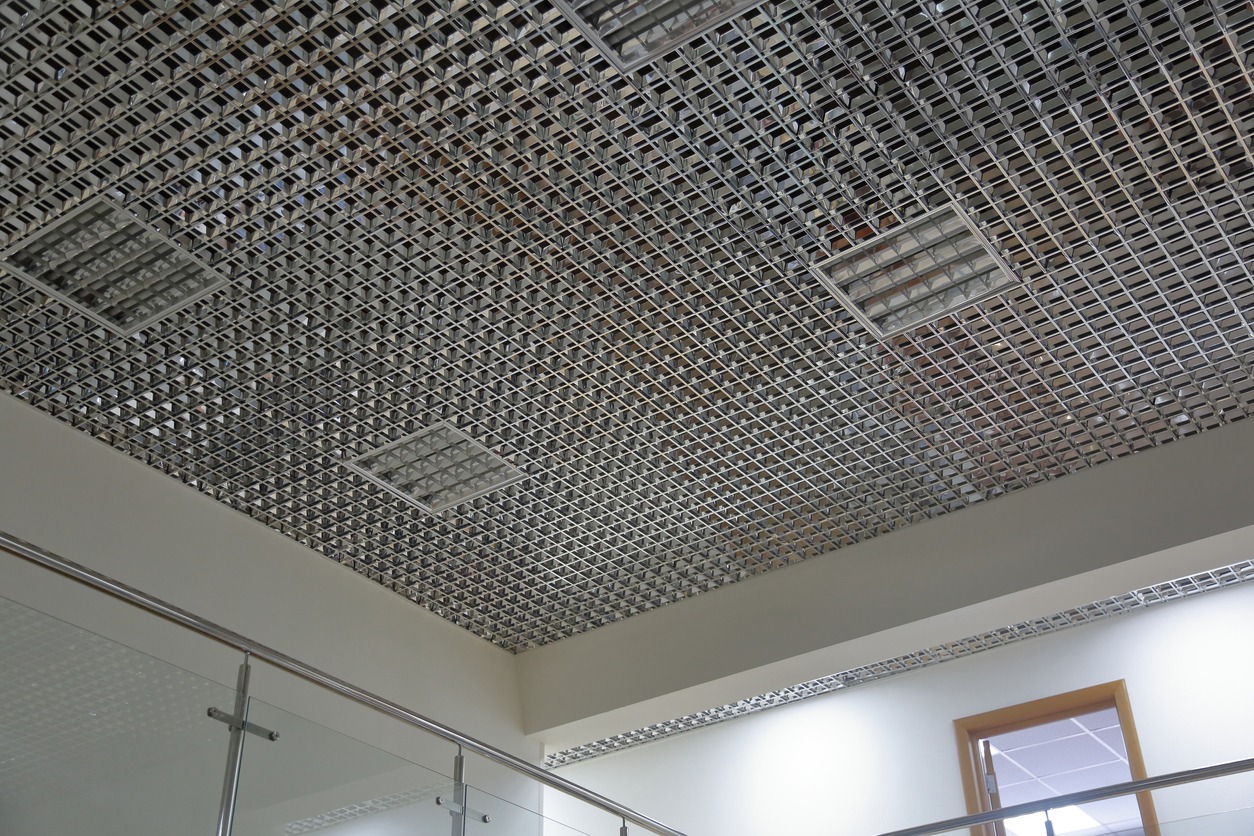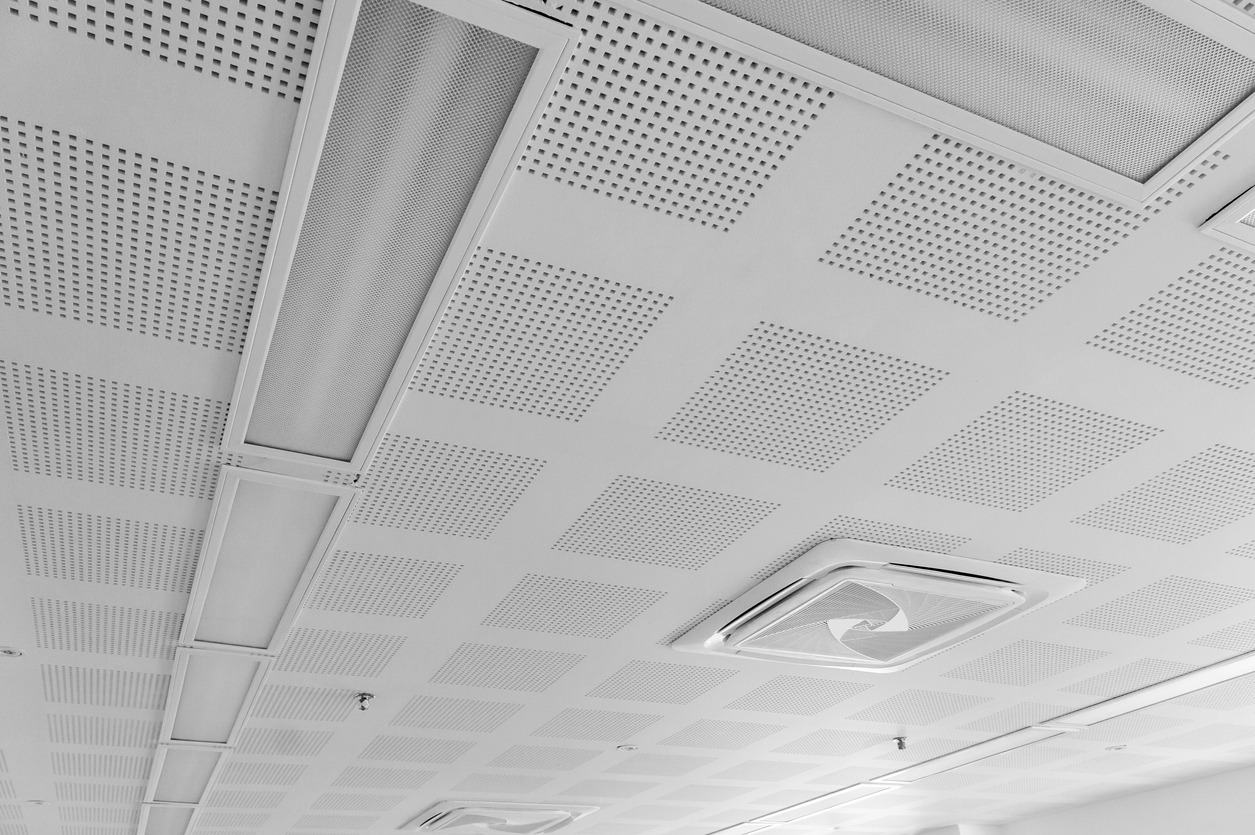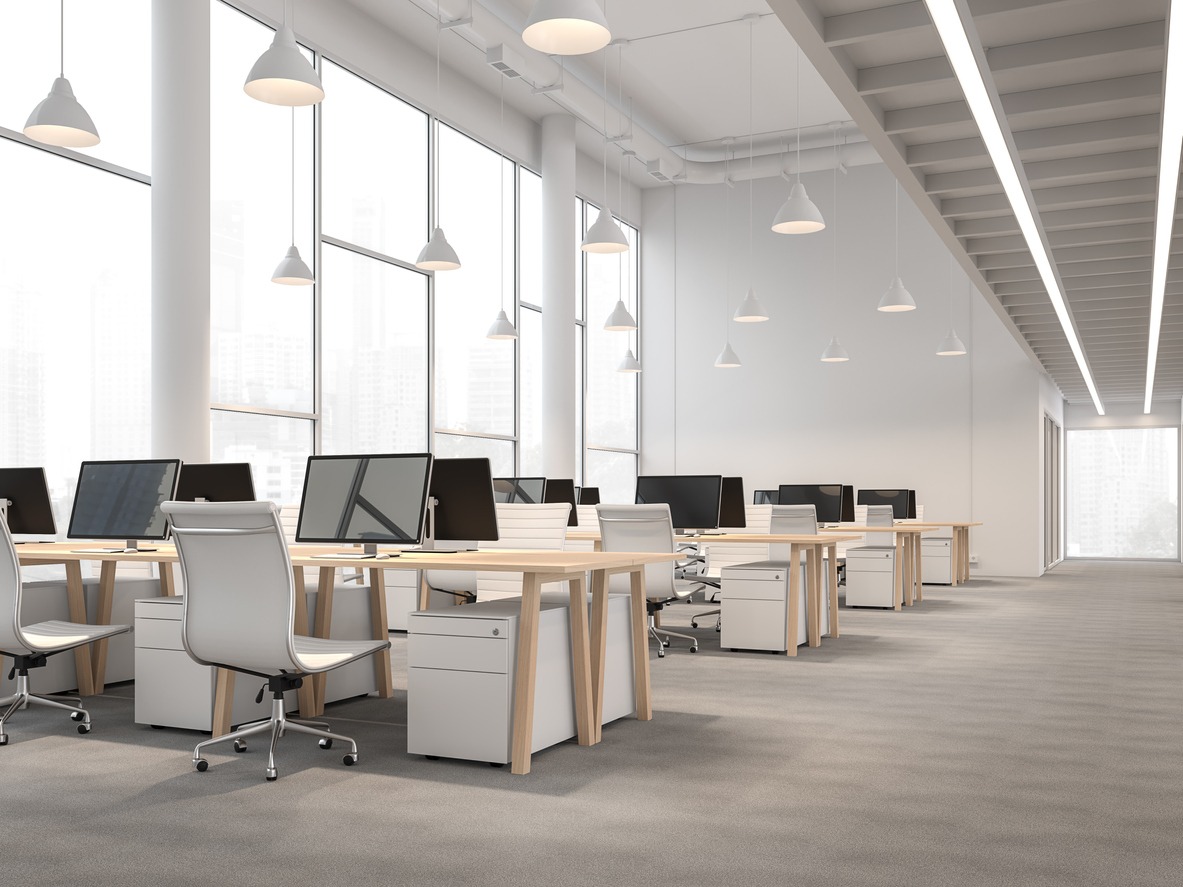Commercial buildings are often enormous, and the ceiling choices available for something huge are usually limited. But if you have a modest commercial space, you have all of the same options as we do in the residential market. Commercial ceilings are an important part of any building’s interior design. They play a crucial role in providing insulation, aesthetics, and soundproofing. Therefore, it is vital to choose the right type of commercial ceiling for your building, as it can impact everything, from energy efficiency to employee productivity.
Building a commercial ceiling, in particular, can provide numerous benefits. You can customize one to match any aesthetics, and it can also be an effective solution for addressing different problems within an indoor space. But what options are available for you to choose from? In this article, we are going to explore the major types of commercial ceilings and understand their features and pros and cons. This way, you’ll be able to make an informed decision when choosing the right ceiling for your commercial space.
The Major Types of Commercial Ceilings
Below are the different commercial ceilings available today that you can choose from:
Exposed Ceilings
Exposed ceilings have an industrial feel to them. Since they are exposed, there’s nothing “hiding” the pipes, ductwork, and electrical wires, so the concept of a finished look is absent. Because everything is exposed, this type of ceiling is simple to maintain. Also, since the ductwork is exposed, it provides some cooling and heating benefits. As the ductwork carries heated air, it will heat up and provide ambient heat around it. You can install cooled beams to supplement this component to expand on this notion.
The disadvantage of this type of commercial ceiling is its appearance. When building an exposed ceiling, it is important to remember that everything is visible. To tone down the exposed look, you can keep the walls light and paint them dark. This allows the eye to focus on something other than the ceiling.
Suspended Ceilings
Suspended ceilings have long been a low-cost option in the commercial ceiling industry. They are typically made up of a metal grid hanging from the structure above and covered in ceiling tiles. This creates a handy void above the tiles that can house wires, heating ducts, plumbing, air conditioning services, and more—a great feature if you want to conceal your utilities while still allowing for easy maintenance.
In recent years, suspended ceilings have made great strides. The variety of tile options available makes this a versatile option. Choose suspended ceiling tiles with added acoustic properties to minimize reverberation or tiles with additional insulation properties to minimize energy bills significantly.
Expanded Mesh Ceilings
Expanded metal ceilings are excellent for achieving a modern, industrial aesthetic. They fulfill some of the same functions as an exposed ceiling, such as allowing a peek of the ceiling void, which greatly impacts it. They’re preferred for modern offices, airports, sports centers, shopping malls, train stations, and other projects with high ceilings. Their acoustic performance is far superior to that of an exposed ceiling. A metal mesh ceiling can easily replace old ceiling tiles in renovation projects without replacing the current grid system.
Interstitial Space Ceilings
These are ceilings that have a small crawl space built above them. This is significant for several reasons. For example, it allows you to hide all of the components running in the space above while allowing easy access in the event of an issue.
This type of ceiling is common in hospitals that require additional equipment but don’t want all the tanks and other equipment sitting in the rooms. This results in less clutter and more flexibility in the rooms. The rooms will be changed up and out a lot throughout the hospital’s lifecycle, but You can easily move the key parts in the ceiling from one room to another.
An interstitial space ceiling allows maintenance, change, and upkeep without disrupting the below floors. Construction can occur without interfering with others.
MF Plasterboard Ceilings
Image: keep the image on the original post
Plasterboard is a low-cost, lightweight ceiling option that is screwed to a metal framework hanging from the above structure. This is followed by taping or plastering, jointing, and painting for a seamless, smooth finish.
With excellent acoustic properties and moisture and fire resistance options, this solution will work in most commercial settings. MF ceilings can be a great way to create unique sloped and curved ceilings.
Acoustic Ceilings
This is a ceiling used to dampen the sound that bounces off the building’s hard surfaces. Often, these can be quite beautiful and provide an excellent aesthetic look to the building. If done correctly, it will make the space warmer and more inviting, even if the ceilings are very high.
A building is frequently constructed, and as it is used, there is a great deal of noise bouncing around. This is a cheap way to fix the problem without tearing out the original ceiling.
This type of ceiling absorbs sound waves by combining materials and shapes. An acoustic ceiling is ideal for malls, airports, and other large buildings with many hard surfaces for cleaning, but it needs to reduce all the noise that reflects off these surfaces.
Wooden Ceilings
Timber ceilings can be very visually appealing. There are various types of wood to pick from, but we recommend sourcing sustainably and using locally available material. A talented architect can create some stunning designs.
Convection and Radiant Chilled Ceilings
Image: keep the image on the original post
Radiant chilled ceilings are a network of lines that run cooled water through. Some people incorporate these lines into plasterboard, but this isn’t the most efficient method. The plasterboard operates as an insulator and thus works against the goal. These panels cool the air, and insulation is installed above to keep the air within the desired room cool.
Convection chilling is like radiant chilling, but the air is chilled by passing through fins and fans. This allows air to make contact with both the upper and lower portions of the fin.
Light-Reflective Ceilings
These are designed to improve the overall lighting of an area by reflecting light back into the room. Light-reflective ceilings are often used in commercial spaces that need bright, well-lit environments, such as offices, hospitals, and retail stores. They can be made of materials like gypsum, metal, or plastic. They are also available in different colors and finishes.
Specialty Ceilings
Specialty ceilings are made to meet specific requirements, such as moisture resistance, fire resistance, or enhanced durability. These ceilings can be made of different materials, including gypsum, fiberglass, or metal. Specialty ceilings are often used in commercial spaces where specific performance characteristics are needed. These include clean rooms, food processing facilities, and laboratories.
Characteristics of a Good Commercial Ceiling
There are many different options when it comes to choosing a commercial ceiling. But a good commercial ceiling should have several key characteristics that will make it suitable for the specific needs of a commercial space. Below are some important characteristics of a good commercial ceiling:
Durability
A commercial ceiling should be durable enough to withstand the wear and tear of daily use, as well as possible damage from humidity, moisture, and other environmental factors.
Acoustics
Depending on what type of commercial space you have, it may be important for a commercial ceiling to have good acoustic properties to absorb sound and reduce noise levels. This is best for offices where most people are busy and need peace and quiet to be able to focus on their tasks.
Lighting
For commercial spaces that need good lighting, a ceiling should be able to reflect light and provide enough illumination for everyone.
Aesthetics
It is also important for a commercial ceiling to complement the overall design of the building or office. It needs to be visually appealing to occupants and visitors and make the space or area welcoming and cozy for everyone.
Fire Resistance
Depending on the local building codes and regulations, a commercial ceiling should be fire-resistant in order to prevent the spread of flames and smoke in case of a fire.
Sustainability
A good commercial ceiling should also be environmentally sustainable and energy-efficient. It is better to choose a ceiling that is made of materials that can be reused or recycled.
Conclusion
Commercial ceilings are indeed an important part of any commercial space. They provide insulation, soundproofing, and aesthetics. Aside from that, they also contribute to employee productivity and energy efficiency. By understanding the major types of commercial ceilings, you’ll be able to choose the right type of ceiling that will meet the specific needs of your space.
Ceilings are very important for achieving aesthetic goals because they serve the primary purpose of concealing structural elements such as electrical wires, water pipes, and air ducts. Commercial ceilings, on the other hand, have evolved. They now have more practical benefits than just meeting design goals.
While some prefer to expose wires, pipes, and ducts for an industrial or avant-garde look, many prefer to install different types of ceilings. Ceilings play an important role in a building’s safety and aesthetics, so it makes sense to prioritize their quality. If you want to achieve long-lasting form and function, it may be time to install the best commercial ceiling for your space.

